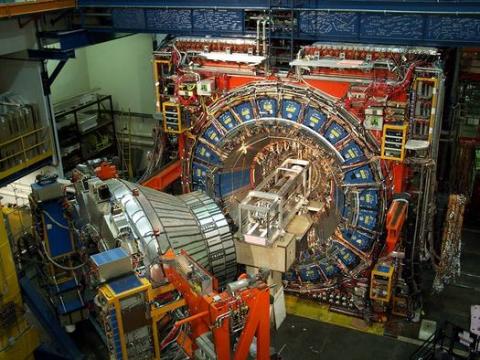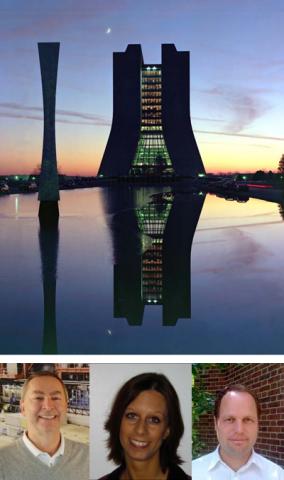

Today, Fermilab’s Tevatron collider will be shut down after over 28 years of operation. Over those 20 years, the Tevatron was at the forefront of particle physics, allowing scientists to conduct the research that has consolidated the foundation for our current understanding of the Standard Model of physics. One of the lab’s crowning achievements was the discovery of the top quark in 1995. The hundreds of publications that have come out of the Tevatron are some of the most influential in physics, contributing significantly to our understanding of the bottom quark, super symmetry, dark matter, and the nature of the Higgs boson. The shutdown of this groundbreaking facility marks a passing of the torch within particle physics to the newer Large Hadron Collider at CERN, which will continue to build on the pioneering accomplishments of the Fermilab Tevaton.
The Tevatron was not just the place where the fundamentals of particle physics were developed, it was also where several TRIUMF employees built their careers. TRIUMF Director Nigel Lockyer spent 22 years performing research with the Collider Detector at Fermilab (CDF) project at the Tevatron, one of two experiments that discovered the top quark. (The competing experiment to CDF at the Tevatron, called D0, co-discovered the top quark.) He describes the Tevatron as “the accelerator centre that probed the energy frontier”. Anadi Canepa and Oliver Stelzer-Chilton, both Research Scientists at TRIUMF, began their careers in physics at Fermilab with the search for supersymmetry and the Higgs Boson, and measuring the mass of the W-boson. Their stories of their time at Fermilab truly convey the excitement and sense of community that existed at the facility. Nigel, Anadi and Oliver all share memories of the opportunities, collaborative atmosphere and strong group bonds they had working on the CDF experiments.
Those who worked at the lab describe it as a place of opportunity. The world-class facilities meant that scientists from around the world had the opportunity to contribute to groundbreaking discoveries. As Nigel described, “it was the place to be…that’s where the action was.” He recalls that even when he was a student, scientists were searching for the top quark as predicted by the standard model. Years later, Nigel was a member of the CDF team that finally discovered the top quark, a huge breakthrough in particle physics. The top quark is the sixth, most massive quark, possible the last quark ever to be found. Time will tell!
Strong collaboration was a signature part of the CDF project. It was a pioneer in terms of international collaboration from the very start. Nigel recalls the work he did with international research teams, noting that “particle physics is the most international field…from the beginning – no borders.” 12 countries, 60 institutions, and 700 authors worked at the Tevatron, one of the largest collaborations of its time. When she began at the CDF as a student, Anadi was struck by the spirit of “free science,” an openness that fostered an atmosphere of collaboration. Oliver also reflected on the close collaboration at CDF and the friendly competition with D0.
The legacy of the FermiLab Tevatron continues not only in our greater understanding of the Standard Model, but also in the relationships and group bonds that were built around the project. “When you meet people…from CDF, you will feel that connection. If you were CDF, you are CDF forever,” said Anadi. The collective spirit and pride of the people taking part in the project made it a unique experience. A set of panels above the detector has the signatures of everybody involved in the CDF project. On his final shift at Fermilab earlier this month – one of the last shifts of the Tevatron’s operation – Oliver read sentimental messages other workers had left in the CDF log book. “You see many entries, ‘It’s my last shift, I’m so sad.’” While the CDF experiment may end, the spirit of the strong CDF team will continue.
The closing of CDF concludes an era of innovation and discovery at Fermilab. What’s next for the Tevatron facility? As physicists from Fermilab begin moving to other programs, the Tevatron site is set to be converted into a museum, taking advantage of the site’s beautiful architecture and surroundings. The closing marks a transition to higher energy experiments at the Large Hadron Collider at CERN, a “natural progression,” says Anadi. That being said, such experiments would not be possible without the work done at Fermilab. The past 28 years of fundamental research and groundbreaking discoveries from the Tevatron have shaped our understanding of particle physics today.
A summary of the Tevatron’s major accomplishments can be found at:
http://www.fnal.gov/pub/presspass/factsheets/pdfs/Tevatron_Highlights.pdf
-- by Aaron Lao, Communications Assistant
